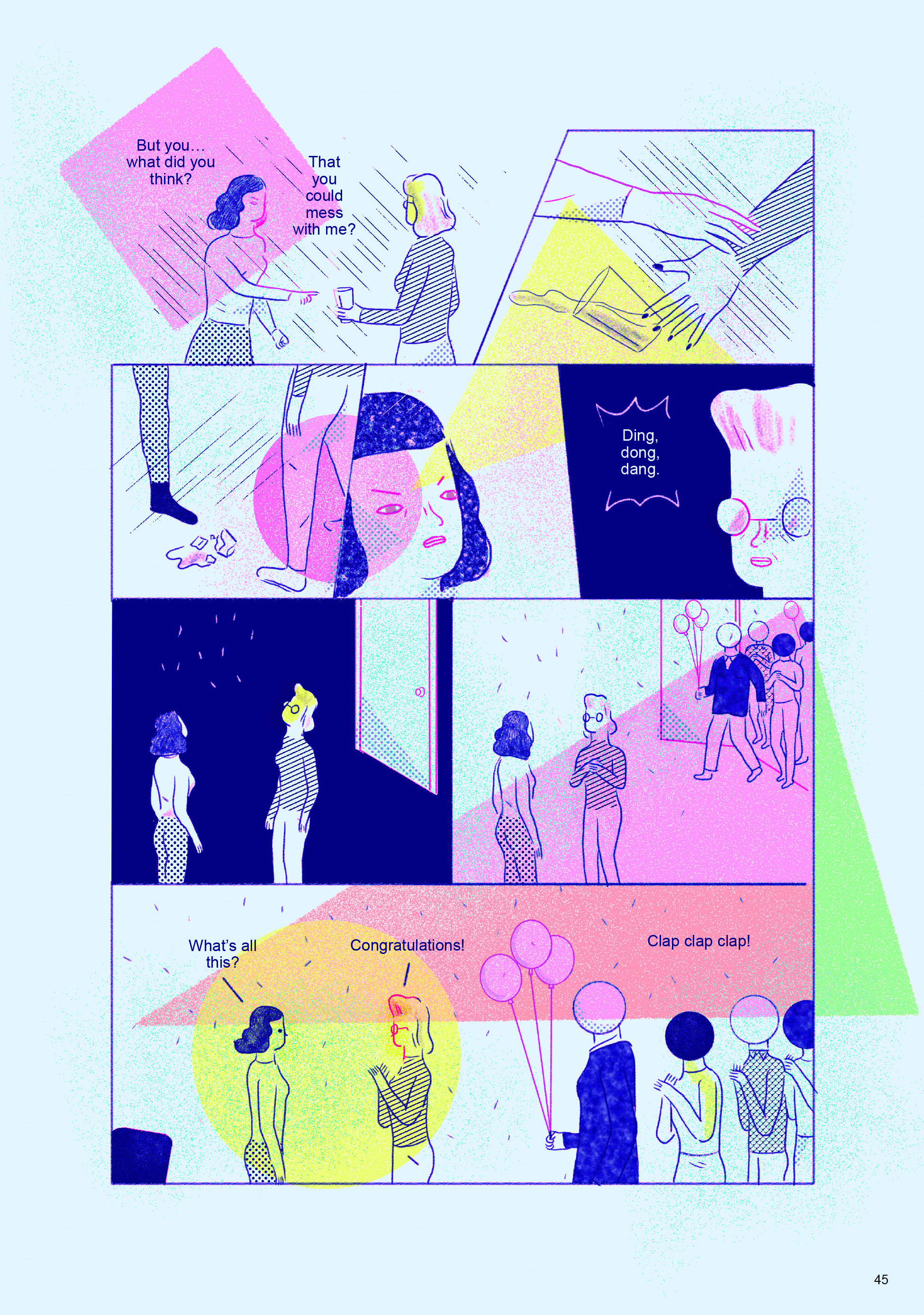Ana Galvañ Discusses the Imagery of Press Enter to Continue

Courtesy Photo
Press Enter to Continue is Spanish illustrator Ana Galvañ’s English-language debut. Translated by Jamie Richards and published by Fantagraphics, the book offers readers a series of surreal short stories exploring the negative effects of technology on society. Several reviews tout the book as “Black Mirror-eque” because of Galvañ’s use of psychedelic colors, abstract themes, and technological representations. Her cover is the first eye-catching concept for a reader and alludes to the content within.
Galvañ told Spine that despite it being the first thing readers see, the cover was the last thing she designed. “I had to convey what was in some manner inside, which is a compilation of several conclusive stories but with elements in common and set in futuristic universes. That is why I created a female character in the foreground with geometric elements around her which contain the characters from the stories.”
Geometric elements are used throughout the graphic novel, highlighting significant characters or moments by drawing the readers’ eyes to what Galvañ would like them to focus on at that moment. Galvañ’ uses color in much the same way. “Color is a tool that helps us to recognize elements that are repeated in a story, so it is very useful. But it also expresses emotions, perceptions, environments.”
Galvan also relies on color to disturb readers. “The color ranges were colorful but uncomfortable, and this way accentuates their alienating side,” she said. Yellow is the main color that repeatedly appears throughout the book, chosen because of its ability to unsettle readers. “Yellow [is] an uncomfortable color as well as flashy, and also combines with the other tones in an unfriendly way,” Galvañ said.
Because of its abstract style and narrative elements, Galvañ’s graphic novel is hard to describe. Readers may interpret each short story within the pages differently, which was important to Galvañ. While some stories contain text, some are purely image based; it’s up to the reader to create context. Galvañ does not seek to press her own intentions on the reader, but removes the ego out of her work and leaves the meaning of her work up to interpretation.
“In Press Enter I did not want to leave a concrete message, and it is not a criticism of the system or technology, but a portrait of the human being, of feelings, fears and conflicts,” she said. “However, readers can always interpret it differently.”
Find Ana Galvañ online at anagalvan.com and on Twitter @AnaGalvan666.
Mercedes is a lazy reader with an interest in postcolonialism, graphic novels, and anything cat related.





